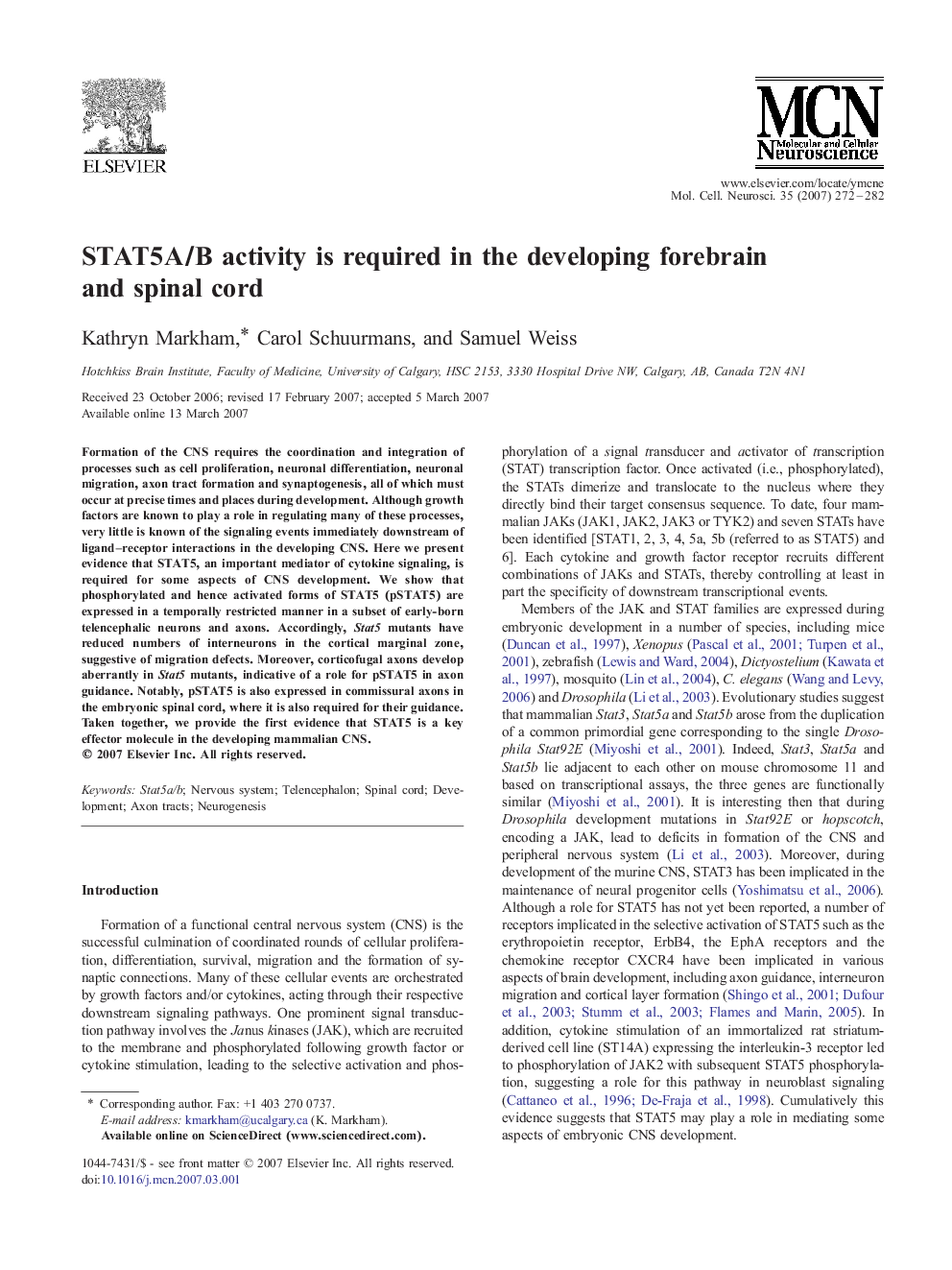| Article ID | Journal | Published Year | Pages | File Type |
|---|---|---|---|---|
| 2199402 | Molecular and Cellular Neuroscience | 2007 | 11 Pages |
Formation of the CNS requires the coordination and integration of processes such as cell proliferation, neuronal differentiation, neuronal migration, axon tract formation and synaptogenesis, all of which must occur at precise times and places during development. Although growth factors are known to play a role in regulating many of these processes, very little is known of the signaling events immediately downstream of ligand–receptor interactions in the developing CNS. Here we present evidence that STAT5, an important mediator of cytokine signaling, is required for some aspects of CNS development. We show that phosphorylated and hence activated forms of STAT5 (pSTAT5) are expressed in a temporally restricted manner in a subset of early-born telencephalic neurons and axons. Accordingly, Stat5 mutants have reduced numbers of interneurons in the cortical marginal zone, suggestive of migration defects. Moreover, corticofugal axons develop aberrantly in Stat5 mutants, indicative of a role for pSTAT5 in axon guidance. Notably, pSTAT5 is also expressed in commissural axons in the embryonic spinal cord, where it is also required for their guidance. Taken together, we provide the first evidence that STAT5 is a key effector molecule in the developing mammalian CNS.
